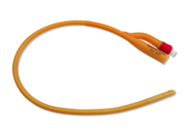
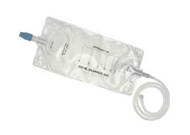
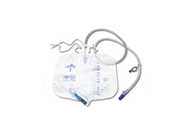
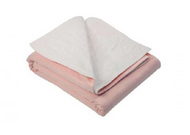
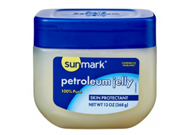
According to several surveys, 200 million people worldwide are affected by problems related to the urinary system. It is also suggested that this figure will rise over time.
All these people are suffering and losing out on a vital aspect of their life. Therefore it is necessary to increase awareness about urology so that we can provide proper help to those in need.
Basically, Urology is a medical study focused on the diagnosis and treatment of diseases and conditions affecting organs like kidneys, ureters, bladder, and urethra which are part of the urinary system in both males and females.
So, Let’s go through this blog and find out why urological diseases are getting common among youth and how specialists use different urological supplies to cure them.
Let's analyze what are urological diseases and the reasons they are becoming more common. Urological diseases are medical conditions that affect the urinary system, which includes the kidneys, bladder, ureters, and urethra. Conditions such as urinary tract infections, kidney stones, bladder disorders, prostate problems, and urinary incontinence are types of urological diseases.
In recent years, urological diseases have been on the rise, and several factors contribute to this increase. Firstly, changes that we are seeing in lifestyle patterns, including lethargic habits, unhealthy diets, and inadequate hydration, lead to obesity, which is a significant risk factor for urological conditions such as kidney stones and urinary incontinence.
Also, an aging population plays an important role in the increasing chances of urological diseases. As people age, the risk of developing conditions like urinary incontinence rises. In fact, women are more likely to get urinary incontinence rather than men. Approximately 30% of men and 40% of women suffer from urinary incontinence. This is due to the fact women's reproductive health goes through events like pregnancy, childbirth, and menopause, which affect the women’s urinary system.
Urological supplies refer to a wide range of medical products designed to assist in the diagnosis, treatment, and management of conditions related to the urinary system. These supplies play a crucial role in maintaining urological health and enhancing patients' quality of life.
In hospitals and clinics, urological supplies are used by urologists and other healthcare professionals. These supplies are not only used in performing diagnostic tests and surgical procedures but also help in providing support to patients with urinary conditions. For instance, catheters are commonly used to drain urine from the bladder during surgery or when patients are unable to urinate naturally.
External catheter bags, washable bed pads, and urinary collection systems are commonly employed to manage urinary incontinence or assist individuals with limited mobility who struggle with accessing bathroom facilities. Drainage bags, adult diapers, and urological dressings are frequently utilized to maintain hygiene and provide comfort to patients with urinary conditions in the comfort of their homes.
When operating urological conditions, selecting the right supplies is crucial. Analyzing and understanding the available urological supplies can help determine which ones best suit your specific condition and needs.
A catheter is a flexible medical device commonly used in urology to assist with bladder drainage. It consists of a thin tube inserted into the body through the urethra or another entry point, such as a surgical incision.
Catheters come in various types, including Foley catheters, which have a balloon at the end to hold them in place within the bladder, and intermittent catheters, which are inserted and removed after each use. These devices allow for the effective management of urinary retention, bladder dysfunction, or temporary bypassing of the natural urinary system is necessary.
Product Description– The catheter is a silicon material tube that features flexible materials, and multiple lumens. It is a tube with an average size of 14FR to 16FR mostly made up of bio-compatible material which is inserted into the body to drain urine. The Average price range for catheters is from $0.20 to $500. These prices can vary from your choice and what brand you choose.
Drainage bags are essential urological supplies used to collect and store urine when natural bladder function is compromised. They consist of a bag attached to a catheter or stoma, allowing urine to flow directly into the bag. Drainage bags come in various designs, including leg bags for discreet and mobile use, and larger bedside bags for overnight or extended periods. Also, remember to change it every 7 days.
Many bags feature anti-reflux mechanisms to prevent urine from flowing back into the bladder. These durable and leak-resistant bags are an integral part of managing urinary incontinence, post-surgical care, and other conditions requiring urine collection.
Product Description– Drainage Bags are mostly made up of plastic material, and fabric attached to the skin side of the bag. It comes in different sizes categorized into 0-500 ml, 500-1000 ml, 1000-2000 ml, and more than 2000 ml. The average price range for bladder bags is from $1 to $90 and may vary on your choice.
A urological irrigation kit is an essential urology tool to effectively perform irrigation procedures. It typically includes a sterile irrigation container, tubing, connectors, and specialized catheters. These kits ensure aseptic irrigation by providing a closed system that minimizes the risk of infection.
The containers are designed to hold sterile irrigation solutions such as saline or antimicrobial fluids. The tubing and connectors enable easy connection to the irrigation source and catheters. Urological irrigation kits are meticulously designed to enhance patient comfort and safety during procedures, facilitating optimal urinary tract cleansing.
Product Description– A urological kit typically consists of items such as a catheter, sterile gloves, lubricating jelly, antiseptic wipes, and a collection bag for urine drainage which you can order according to your size. Typically the average price range of the kit is from $30 to $247. These prices are average, so they can vary from your preference and brand.
Reusable bed pads are designed to manage urinary incontinence and protect the bed from getting wet. These pads are made with highly absorbent materials that effectively capture and contain urine, preventing leaks and stains. The waterproof backing ensures that no moisture seeps through to the bed or furniture.
Unlike disposable pads, reusable bed pads can be washed and reused, making them cost-effective and environmentally friendly. To accommodate various needs, they are offered in a range of sizes and absorbency levels. Reusable bed pads provide comfort, convenience, and peace of mind for individuals with urinary incontinence, ensuring a dry and hygienic environment. Also, It should be changed every 3 to 4 hours for preventing any skin irritation.
Product Description– These pads are made up of multiple layers. The top layer is made of soft, absorbent fabric such as cotton or polyester. The middle layer is of porous materials like flannel or foam, and the bottom layer is waterproof to protect the mattress. These pads can cost around $200 to $300 per month.
Lubricants are indispensable urological supplies used to facilitate comfortable and smooth medical procedures involving the urinary tract. These specially formulated substances reduce friction and enhance the ease of catheter insertion, minimizing patient discomfort. Urologists often rely on water-based or silicone-based lubricants due to their compatibility with various catheter materials and minimal risk of adverse reactions.
Lubricants create a slippery surface, allowing catheters to glide effortlessly through the urethra, reducing the risk of trauma or injury. They play a crucial role in ensuring successful catheterization, urodynamic studies, and other urological interventions, enhancing patient comfort and promoting positive clinical outcomes.
Product Description– These lubricants consist of chemicals like polyvinyl alcohol, polyvinylpyrrolidone (PVP), and some polysaccharides, such as carboxymethyl and carboxyethyl cellulose which helps in lubricating tubes for less irritation. The average price range for lubricants is from $1 to $14 and these prices can vary according to your preference and choices.
Urological supplies are used daily by patients suffering from urinary system-related diseases. These supplies make day-to-day tasks easy for them, therefore we need to understand what are urology and urological diseases. Also, this blog will help you find out about the information of different urological equipment which can help you find the best supplies in your budget.
It is suggested to check your local regulations on different medical products. Make sure to use biohazard containers for disposing of any type of urological supplies with your household waste. Many areas have medical waste disposal services that help in the proper disposal of medical waste.
Yes, you can travel with urological supplies. Ensure you pack them securely, follow transportation guidelines, and carry any necessary documentation for security checks in places like airports.
It depends on different urological supplies– Reusable bed pads should be changed every 3 to 4 hours, Drainage bags should be changed once a week and catheters should be changed at least every 3 months.
Yes, urological supplies are designed to be waterproof, allowing you to swim or take a shower while wearing them. However, it is always advisable to consult a doctor and the specific instructions provided on the product to ensure waterproof capabilities.
To prevent infection you should regularly change your urological supplies before their expiry, regularly clean them in time, and also keep your medical supplies in a cold and dry place so that they won't get contaminated.